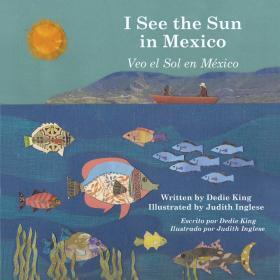I’ve just had the opportunity to take a look at a wonderful little series of picture books, called I See the Sun, which is written by Dedie King, illustrated by Judith Inglese, and published by Satya House Publications. Each book in the series follows one child, during one day in his or her life. The universal experiences of childhood—everyone wakes up in the morning, has their daily routine, and goes to bed at night—are offered along with the inherent differences of each location’s traditions, food, and language.
Thus far, the books follow children from Nepal (2010), China (2010), Afghanistan (2011), and Russia (2012). A new book, focusing on Mexico, is being released in July. I got a sneak peak and it’s just as engaging as others in the series.

It’s a great concept for a book series, and it seems to me that it is one that would be as at-home inside the classroom as it is in a child’s bedroom.
The artwork is an appealing combination of real snapshots that have been overlaid with paper cutouts, giving texture and depth to the illustrations. An added benefit is that this approach gives young readers the opportunity to examine, and reexamine, the daily backdrop of real lives in faraway countries. I know my son, a 5-year-old kindergartener, will get as much delight from looking at the pictures over and over again as he will hearing the stories. I can already tell that we will have many, many conversations about how different each country is: from where the boy in Russia plays soccer after school, to where the girl in Afghanistan sleeps, and how the boy in Mexico gets to help his dad at work.
What sets the books even further apart from other picture books that focus on international topics, for me, is the fact that each has been translated by a native-speaker into the language of the story’s origin, and the pages contain both the English and the translated text. It’s a wonderful detail that, in my opinion, would work very well in classrooms with bilingual children and English-language learners. The translations also work for readers who do not speak the language—seemingly handwritten (except for the Mexico volume, alas), they work as another layer of embedded illustration.
At the end of each book is a one-page glossary, a description of where the story has been set, and further details about the country’s history—information which would further arm a teacher for all the excited questions that I’m sure students would throw his or her way.